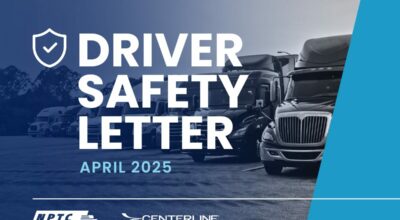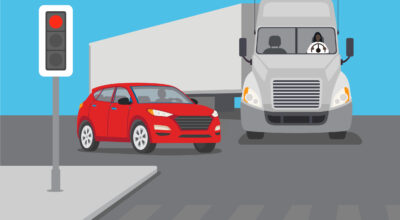
Driving trucks can be challenging enough when the sun is up, and you can clearly see everything around you. But when darkness sets in, the challenges you face as a truck driver often increase exponentially since you don’t always have advance notice of what lies ahead.
If you are typically behind the wheel during the nighttime hours, here are some tips that can help keep you—and everyone else on the road—more safe.
- Check your headlights before you start your shift. The last thing you want is to be in a dark area late at night and discover that you only have one headlight. You can avoid this scenario by making sure all your lights work before you even get on the road. Realistically, this task should already be on your pre-inspection checklist. If it isn’t, make sure you add it. When looking them over, make sure they’re aimed in the right direction and that your high beams work.
- Check your windshield wipers too. If your wipers don’t work well, you’ll have a hard time seeing in the rain or snow. Give them a look to make sure they’re not too worn out, replacing them if they are. Top up your washer fluid while you’re at it so you can remove the windshield grime that often comes with wet or slushy roads.
- Lower your driving speed. At 65 mph, a passenger vehicle needs just over 300 feet to stop. This length increases to around 525 feet for a fully loaded tractor-trailer. And these distances can be even greater if the road is wet or slippery. Lowering your speed gives you longer to stop, which is even more important if you have a slower reaction time, are dealing with weather issues, or to make up for the stop time you lose due to brake lag.
- Increase your following distance. Another way to give you more time to stop your truck, if necessary, is to allow for more distance between you and the vehicle in front of you. Generally speaking, you should allow one truck’s length for every 10 mph in speed. If you’re going 60 mph, for example, there should be six truck lengths between you and the vehicle ahead of you. Increasing your following distance can also reduce your risk of jackknifing if you face a sudden stop.
- Take a break if you get tired. Yes, you have a schedule to keep. But that schedule doesn’t do anyone any good if you fall asleep behind the wheel and hurt or kill yourself or someone else. If you feel tired, find someplace to stop and get out for a minute. This would be a good time to use the restroom or fuel up. The Cleveland Clinic also recommends grabbing a coffee to get some caffeine in your system, doing a bit of exercise to increase your blood flow to the brain, or taking a quick 20-minute nap to give your alertness level a boost. Watch your intake of sugary foods and drinks when fatigue sets in because, while these items may initially give you more energy, you’ll likely wind up crashing—making you feel more tired than before.
- Remain aware. It’s easy to sort of “zone out” when driving trucks, especially if it’s a lengthy trip or you’ve driven the same route several times before. However, zoning out at night means that your reaction time will be slower, making it harder to stop if an animal jumps out onto the road or an accident occurs in front of you. Pay attention to your surroundings and remain aware of any potential threats in that area, such as deer crossing the road or falling rocks, so you can respond quickly if you need.
More safety tips are available on Centerline’s app. Or, if you’re a driver who is currently looking for work or in search of a new job, we can help with that too.
We fill around 10,000 assignments annually. Contact us today and let us know how we can help you!


